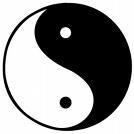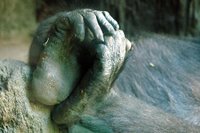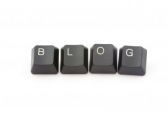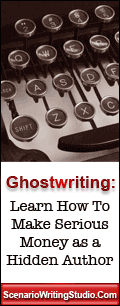One Writer’s Tap Dance

Eight nimble fingertips strike and click across a black keyboard like tap dancers gracing a stage. My right thumb directs dramatic pauses between steps; my other one hovers in mid air for team balance. Everyone synchronizes in swift form, gliding and tapping to a silent rhythm from my writer’s mind and heart’s pulse. I drill them ever onward, without rest stops or stretch breaks, until I see completion of the basic form. Awkward maneuvers wait for repairs following our first dry run. We ignore aches, sores, and missteps through the first draft of our dance. Once our rehearsal records onto the white screen, I allow time to rest and revise.
My tap dance requires additional hardware from a computer and monitor. Without them, I couldn’t create my work in due time. I’d have to revert back to pen and paper, and that would feel like the dance of death.
The light that radiates from the monitor illuminates my mind, and yet it almost blinds me after long hours of intense focus. Over time I squint to create. But the bright light provides the white-yang backdrop for my dance on the black-yin stage. They coincide.

At front-and-center stage I sit in my choreographer’s chair where dance sounds echo off the ceiling and nearby walls. Their melodic milieu maintain pace with my moods and feelings. I avoid negative ones like anger and disgust, as they ignite irregular fiery forms from fierce taps that could please no one. Likewise, fear and sadness stifle my dancers’ abilities to execute completely smooth moves. Of course, my most talented productions blossom during upbeat emotions. Affection and delight spark professional soft shoes. Feelings of pride further pump up my tappers for our most excellent performances, even when the work involves ad lib.
Following a sound night’s sleep, I call back my dancers for another session. We work under a creative process contract, which involves numerous practice-to-polish sessions. With mental notes as well as scribbled ones, I instruct new key taps in certain places, a few deletions in other spots, or revised sequences to replace any rough patches. We work toward a natural flow of motions and tempo.
All the hard work bestows wings to my smile as I approach the end of our composition. Overall, I trust my dancers’ skills and my creative mind to weave and flow the sequences together like an English Shuffle. Once we practice and revise several times, I deem our work prepared for public scrutiny.
At times I print my dance as black-yin art on white-yang paper to send it by post. Other times, however, my work crosses over the electronic freeway. Either way it endures evaluations before finding its top theater.
At the end of my final production I hear applause.
“Tappers,” I say, “take a bow and stretch, you’ve danced well today!”
I’m grateful for my fingers’ grace; they serve me well, unlike my two gorilla feet.

THE END.
I once submitted this essay to a descriptive competition that centered on any of the arts. I didn’t win or place in the contest, but I still like my piece. I revise it from time to time, hopefully making it better.
How would you write a 500-word descriptive essay regarding writing? Weave your own tapestry and, if no contests apply, consider posting it on our Blog.
 It makes for great writing practice!
It makes for great writing practice!Labels: Sue Donckels, writing competition












0 Comments:
Post a Comment
Links to this post:
Create a Link
<< Home